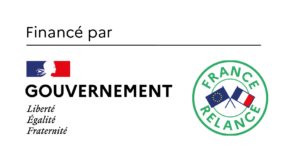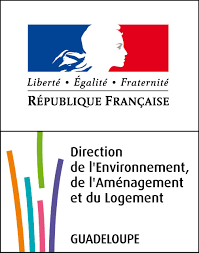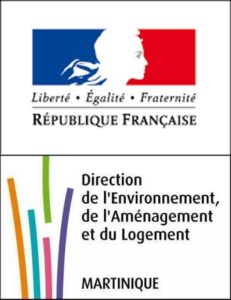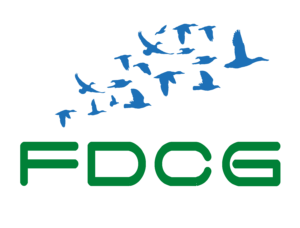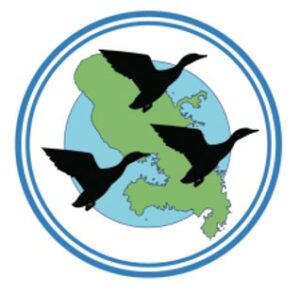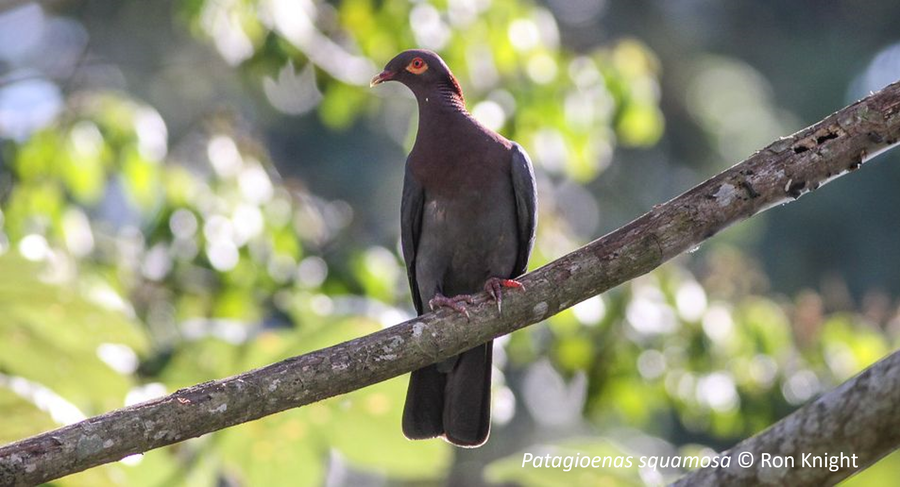In the French Caribbean, hunting is regulated to prevent the decline of populations of certain bird species. However, in Guadeloupe and Martinique, this management faces a major challenge: the crucial lack of knowledge about the ecology and population dynamics of certain game bird species. These gaps lead to recurring conflicts between hunters and environmental protection associations. Both parties agree: there is an urgent need for precise knowledge to enable informed management of huntable species.
The ESPACYPA project responds to the need for better knowledge of game bird species. The aim is to set up rigorous monitoring of several bird species of hunting interest in the territories concerned (Guadeloupe, Saint-Martin and Martinique). More specifically, the project will focus on the spatial distribution, temporal dynamics of reproduction and population dynamics of several avian species (see our first article), using well-developed methods and protocols developed in previous projects.
First data collected in Guadeloupe
The project has been underway for almost a year in Guadeloupe and has already seen the massive installation of measuring equipment, thanks in particular to the recruitment of Bryan Leborgne, an ornithology technician who is fully dedicated to the project, and with the help of Christopher Cambrone, a specialist in bird monitoring methods in Guadeloupe.
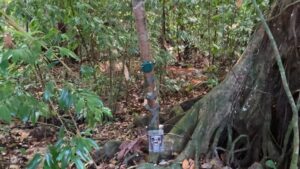
A camera trap and an acoustic recorder attached to a tree
Camera traps were deployed throughout the archipelago, at sites selected to represent, proportionally speaking, the different forest types. A total of 59 sites on Guadeloupe’s two main islands, as well as eight sites on Marie-Galante and three sites on La Désirade, were each equipped with five camera traps. These devices are programmed to photograph any animal passing in front of it. Active day and night, these 350 sampling points remained in place for two weeks, collecting tens of thousands of photographs.
The analysis of the photos collected is a challenge, due to their large number and their nature. The use of machine learning models based on artificial intelligence should make things easier. Specifically, the aim is to be able to quickly identify which photos actually contain a wild animal, and to be able to automatically identify the species photographed. To achieve this, the first step is to train the model, i.e. to provide it with images for which the photographed species have already been identified, so that it can acquire the specific knowledge and skills to identify them automatically itself.
Multiple monitoring methods in use
Camera traps are a passive method of wildlife monitoring. Non-selective, they have the advantage of allowing data to be collected on non-target species. For example, many mammal predators (mongooses, rats, raccoons, cats, dogs) were photographed, enabling us to better understand their relationship with the bird populations they are likely to affect.
To study the reproduction of species, camera traps are less effective, with few observations of juveniles. On the other hand, the study of bird songs using acoustic recorders should enable us to better pinpoint the breeding period of these species, which vocalize more intensely at this time. Field surveys of nests will also provide more direct observations.
Still based on birdsong, an active method will be used: monitoring by listening points. This involves walking pre-determined circuits, and counting the individuals seen and heard on the basis of their song, directly in the field. This method has already been tried and tested during a mission to Saint-Martin as part of the project, which led to a census of the bare-eyed pigeon (Patagioenas corensis), an exotic species on the island. The data collected in the field and in the bibliography will shortly be published in a scientific article, documenting the species’ arrival on Saint-Martin just over ten years ago and its expansion since then.
Perspectives for Guadeloupe and Martinique
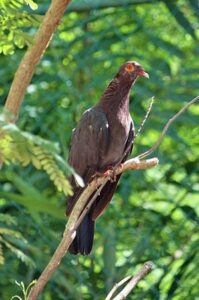
Patagioenas squamosa © Postdlf
Data collection in the field, while already impressive, is still in its infancy. From December onwards, camera traps will again be set up in Guadeloupe for a second replica of data collection, this time coupled with acoustic recorders. The other monitoring methods detailed above will be gradually implemented.
In an interesting development, the project includes GPS tracking of two species, the white-crowned pigeon and the scaly-naped pigeon. Behavioral analyses will soon be carried out in the aviary to ensure that the animals are able to cope with the GPS tracking device they will be fitted with.
Already well underway in Guadeloupe and Saint-Martin, the project is now starting up in Martinique. The same species and the same protocols will be used. A project manager will soon be recruited to start setting up the camera traps and acoustic recorders already on site.
While ambitious in terms of the data collected and the new knowledge gained on the avian biodiversity of Guadeloupe and Martinique, the ESPACYPA project also stands out for the wealth of collaboration between the various local stakeholders. Researchers, environmental protection organizations and hunters are all involved in a common goal to preserve biodiversity.
This project is financially supported by the Fédération Départementale des Chasseurs de Guadeloupe and the DEAL Guadeloupe (via the Plan France Relance) in Guadeloupe, and the Fédération Départementale des Chasseurs de Martinique and the DEAL Martinique in Martinique.
